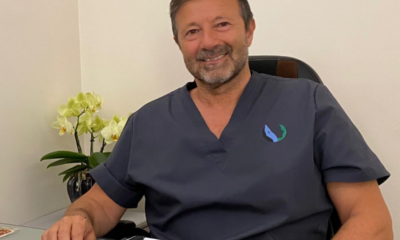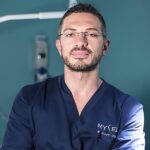Medical doctors and Surgeons
The revolution of laparoscopic surgery
«Surgeons are like pilots, they need constant training». Ferdinando Agresta, surgery director at Vittorio Veneto hospital and Past President of S.IC.E., tells about laparoscopic surgery application with passion and dedication.
As a matter of fact, this kind of surgery can have different applications, in both scheduled or emergency interventions. Moreover, it allows to improve and complete a diagnosis.
From the individual to the team: the laparoscopic surgery changes Ferdinando Agresta, surgery director at the Vittorio Veneto hospital and Past President of S.I.C.E.
From the individual to the team: the laparoscopic surgery changes

Tells us Agresta: «Laparoscopic surgery is fairly recent, it’s being on fire for thirty years». It was born on the sly and at the beginning it wasn’t well accepted by the scientific community, because it shook the traditional way to perform surgeries.
«This surgery has revolutionized the approach of the surgeon as “first lady” – continues the surgeon – moving to a team concept». A change that allowed the team to see the actions of the surgeon simultaneously. «This surgery needs a different equipment that is having incredible growth» continues the surgeon.
At the beginning the surgeon’s knife were of a few centimeters diameter, but now they are about 2 or 3 millimeters. This change allowed children surgeries and on not extensive surfaces, increasing the possible operations. «Laparoscopic surgery – states Agresta – operates with the same rules of open surgery, but with a different approach, almost any abdominal cavity pathologies». It is therefore possible to operate on parenchymatous internal organs, liver, pancreas, spleen, kidneys and above all stomach and intestine.
Moreover, the incisions’ dimensions are also changed. «Once they used to say: great cut, great surgeon» continues the Past President SICE. According to this view, the skills of a surgeon were directly proportional to the dimensions of his cut. It isn’t like this anymore, laparoscopic surgery is also considered minimal invasive. «The main concept is respect the human body – loints out Agresta – because it is important to always keep in consideration its characteristics».
Innovation and treatment
In laparoscopic surgery, technology is essential. «Our training is based on augmented reality – explains Agresta – because we need to train and test our experience». Further, mini-surgery uses 3D techniques to recreate the three-dimensionality of therapeutic gestures.
In other nations these techniques are already part of training programmes, while in Italy we are just about to understand their importance. «The situations that aren’t directly lived – continues Agresta – will be the future of surgeon’s training».
Laparoscopic surgery, during the years, has been having a remarkable development that underlined its function not only aesthetically. As a matter of fact, the cannulas used for incisions are needed in order to insert tools into the body. The more pressure you do, the more it gets deep, with a wound tear risk.
Medicine, in general, follows progress and new technologies and laparoscopic surgery is an interesting exemple.
«When he can, the surgeon avoids excessive pressure on abdominal walls» precises Agresta. This way the wound has a more difficult recovery from an aesthetic point of view, even though it can be reconstructed in laparoscopy. After surgery compression garments can be used: they mustn’t tighten, but only contain the abdominal walls. «These items also have a memento function – concludes Agresta – to remind the patient that he had surgery».




































